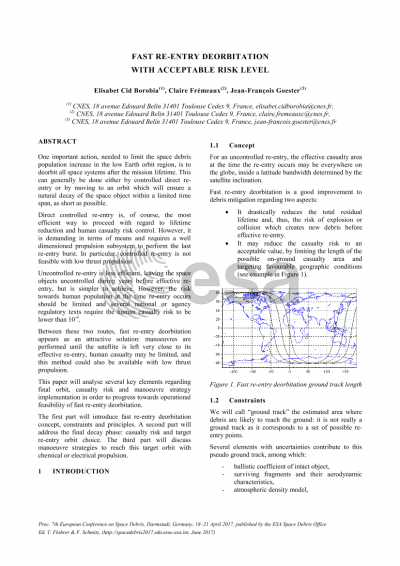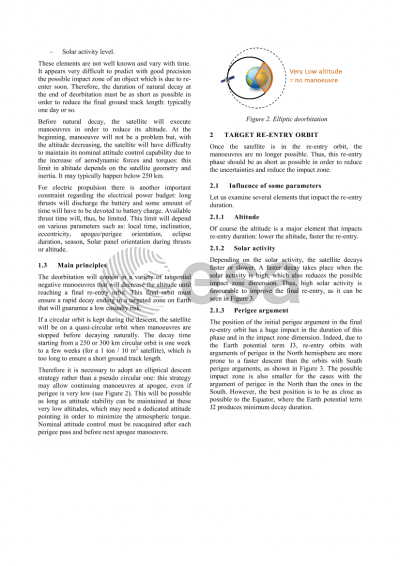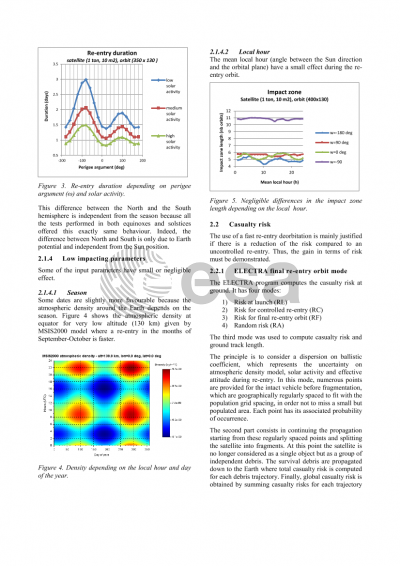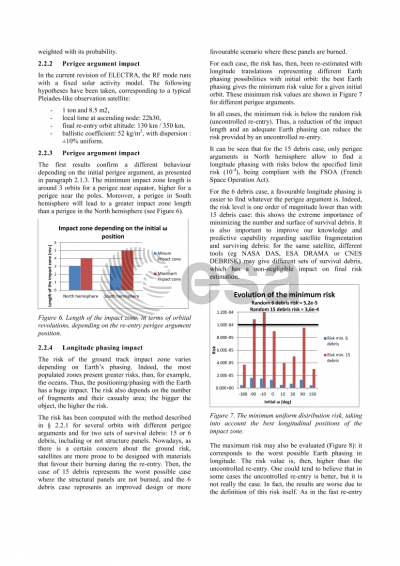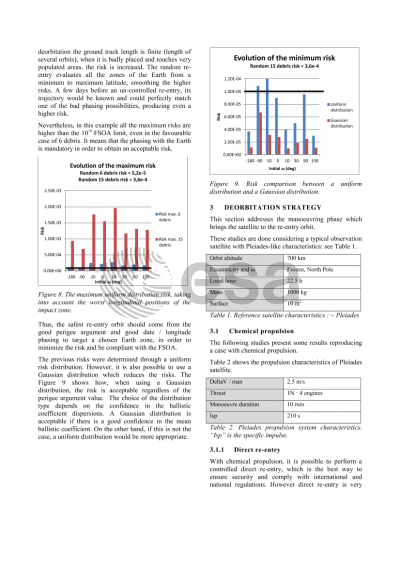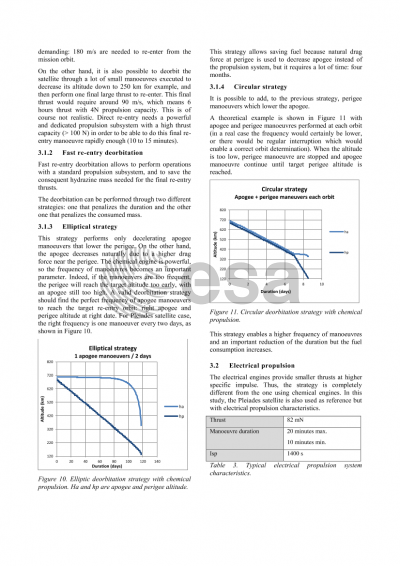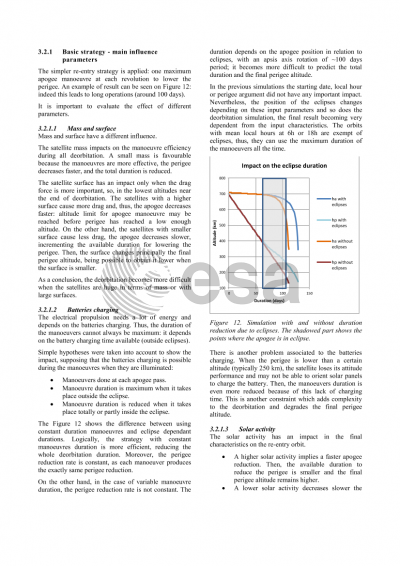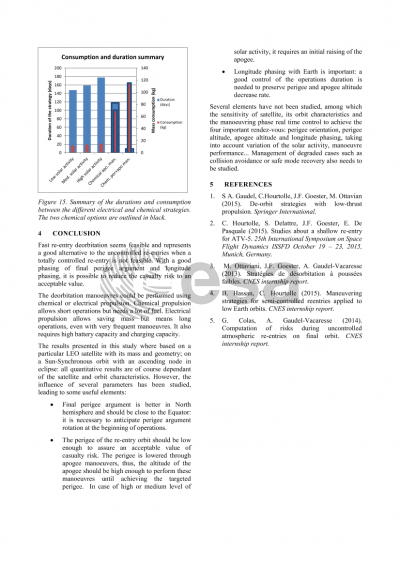Document details

Abstract
One important action needed to limit the space debris population increase in the low Earth orbit region is to deorbit all space systems after the mission lifetime. This can generally be done either by controlled direct re-entry, or by moving to an orbit which will ensure a natural decay of the space object within a limited time span, as short as possible.
Direct controlled re-entry is of course the most efficient way to proceed with regard to lifetime reduction and human casualty risk control. However it is demanding in terms of means and requires a well dimensioned propulsion subsystem to perform the last re-entry burst. In particular controlled re-entry is not feasible with low thrust propulsion
Uncontrolled re-entry is less efficient, leaving the Space objects uncontrolled during years before effective re-entry, but is simpler to achieve. However, the risk towards human population at the time re-entry occurs should be limited and several national or agency regulatory texts require the human casualty risk to be lower than 10-4.
Between these two routes, semi-controlled re-entry appears as an attractive solution : manoeuvres are performed until the satellite is left very close to its effective re-entry, human casualty may be limited, and this method is also feasible with low thrust propulsion.
This paper will analyse several key elements regarding final orbit, casualty risk and manoeuvre strategy implementation in order to progress towards operational feasibility of semi-controlled re-entry.
Preview
